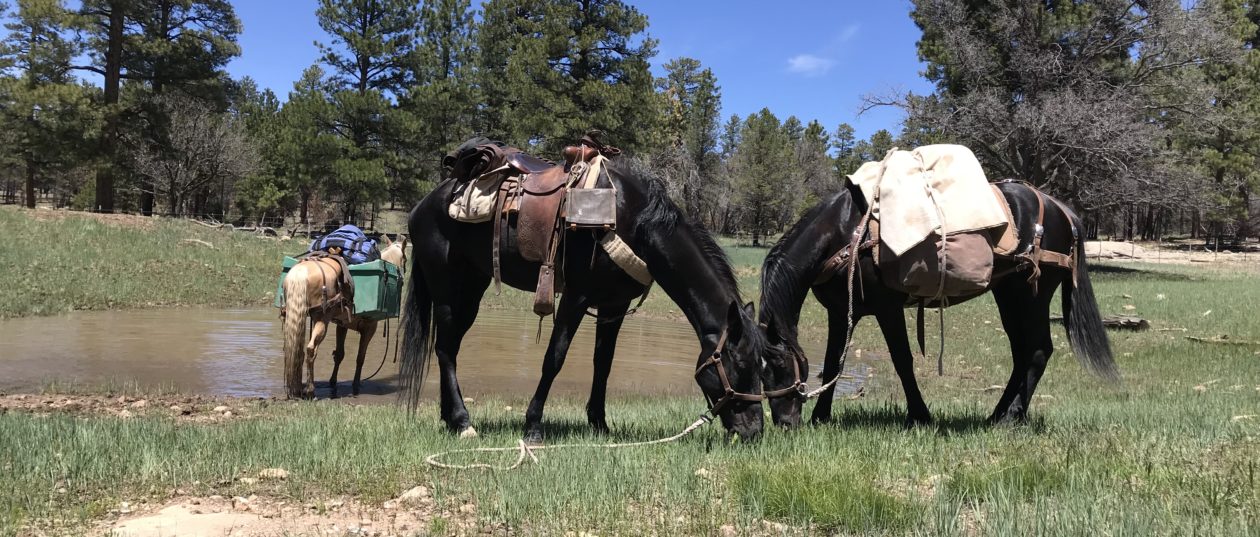Fifteen tough trail miles on Bandit today!
It was such a fine day I decided that Bandit could use a good training ride. I wanted to take him far enough to get him tired, so he would burn off some of his excess energy and find it easier to pay attention to me.
We started up into the foothills east of Salem, Utah to head up the canyon into Loafer Mountain. The first mile of the climb is steep and rocky. Bandit had a very good sweat on by the time we reached the first cellular repeater station. I let him rest there for a few minutes before continuing on up the canyon. We got another mile along, before it became apparent Bandit was getting pretty footsore from the rocky OHV trail, so we turned around and headed back down.
At the cellular tower, however, instead of following the OHV trail back down, we went off-road and made our own trail down the steep hillside. I found Bandit was plenty sure-footed on the steep mountainside, but he knew we were heading homeward and tended to get in a bit of a rush. He wasn’t difficult to hold back, but his attention wasn’t 100% on the trail ahead…which is why we were doing the training!
There is an interesting story about this area. In 1914, a man named John Koyle, who was a bishop for the Church of Jesus Christ of Latter-Day Saints at the time, claimed he was visited by two heavenly beings, who told him there was a large deposit of gold in these hills that would someday save the entire church. Koyle, his family, and many members of the church invested nearly all they had and created the “Dream Mine”.

The mine itself can easily be seen on a nearby hillside. The story is quite interesting and lends a bit of interest to the surrounding hills. Bandit and I passed a small monument, set up in honor of Koyle’s vision, located a little way off the trail. You have to know where it is to find it.
While the mine corporation still exists and one can actually purchase shares in the mine, it is now more of a historic foot-note of the area and a novelty. No gold deposit was ever found and eventually Koyle was excommunicated from the church, because he would not give up the idea that he had received a divine commission to find the gold. The church never officially acknowledged the vision nor encouraged the exploration for the gold. Koyle, however, maintained that he had seen two heavenly messengers to his dying day.
Once we got down the hill, we headed out on the canal road to work on Bandit’s gait a little. He has smoothed out significantly and his run-walk was very nice. He was very compliant and it was easy to keep him in a very nice gait with just a little tuning. We worked on his run-walk and his walk mostly.
At the apex of our training route, in the bed of the canal, we suddenly came upon water! Turns out today was the day they started the flow in the irrigation canal for the season. We were lucky to be able to reach my end-goal of the training for today: a long, dark tunnel…which now had about 3” of water flowing through it!
With just a little coaxing Bandit went on in and once inside, he kept a steady pace through to the other end, about 50 yards. I took a video as we made our return trip through it. No hesitation at all! Nice!
On the way home we gaited a bit, then walked a bit, then back to a gait. It was an enjoyable ride. Despite his propensity to push, I was able to do most of the ride with either a slack rein or light pressure. He is responding well to consistent training. One thing about Bandit, there is no problem with his steering! He steers with very fine cues on the reins and leg cues. In fact, you have to be a little careful that you don’t inadvertently tell him to turn – he can turn on a dime!
On the last long straight before we got back to the stable, I let Bandit loose a little in his strong, wonderful rack. We reached about 15mph in a smooth even gait. Then I pulled him back to a walk and we finished the ride at a leisurely walk, while Bandit cooled off.
It was a very pleasant ride and we were both pooped at the end. I sure enjoy riding Bandit! He’s a horse that always makes me proud to be on him.














You must be logged in to post a comment.